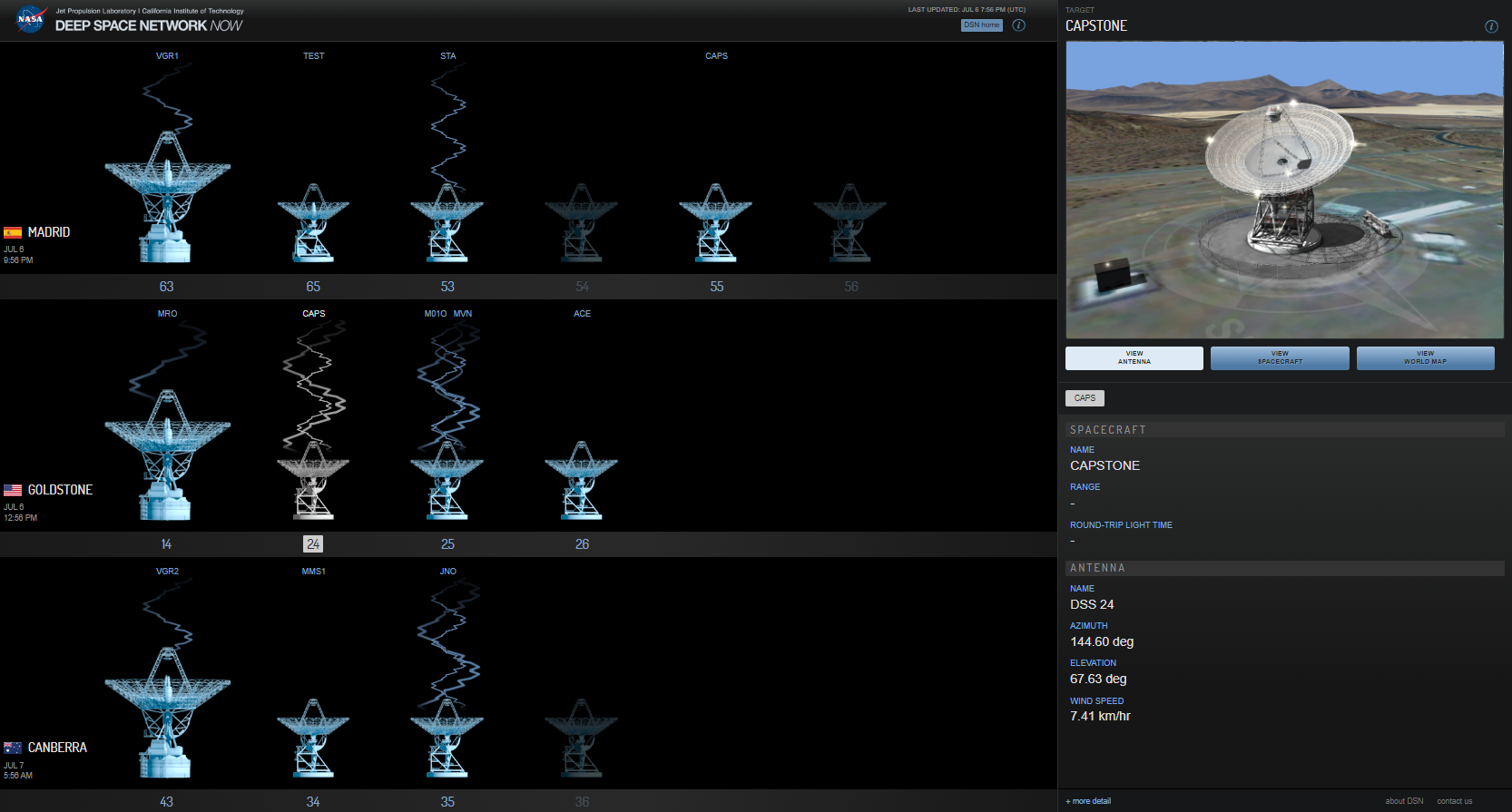The team for NASA’s Cislunar Autonomous Positioning System Technology Operations and Navigation Experiment (CAPSTONE) is standing down from the trajectory correction maneuver scheduled for July 9 to perform additional analysis on the spacecraft’s performance. The mission team will make a determination whether the maneuver is still needed at this time, and updates will be provided.
Trajectory correction maneuvers are thruster burns used to clean up expected variation in CAPSTONE’s orbit and more accurately target its path to the Moon. The maneuver scheduled for July 9 was to be part of CAPSTONE’s first series of trajectory corrections. CAPSTONE’s first trajectory correction maneuver on July 7 achieved about 90% of the objectives for this series of maneuvers.
CAPSTONE remains healthy and on track to arrive to its lunar orbit on Nov. 13. Read more from Advanced Space, which owns and operates CAPSTONE on behalf of NASA.


